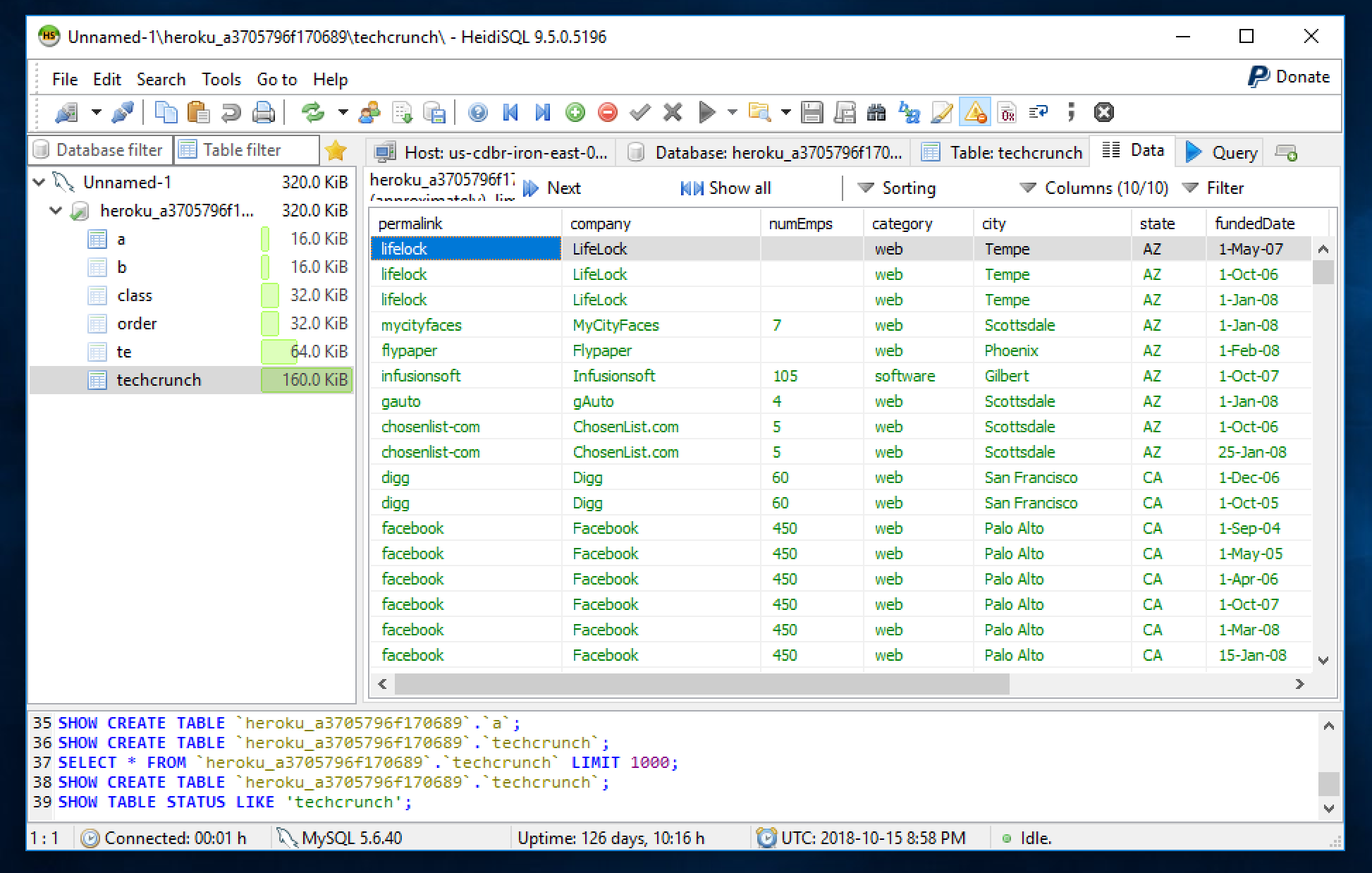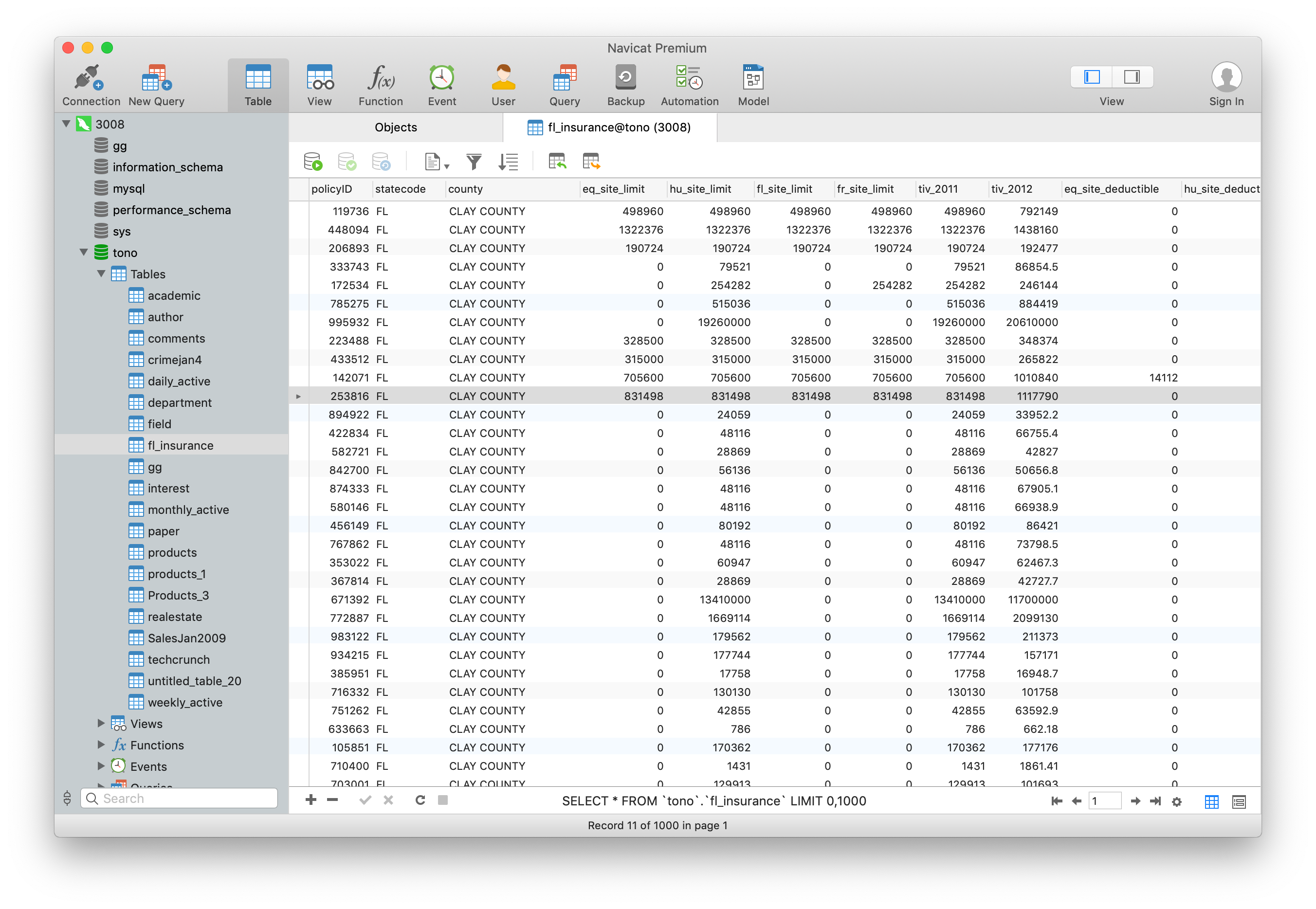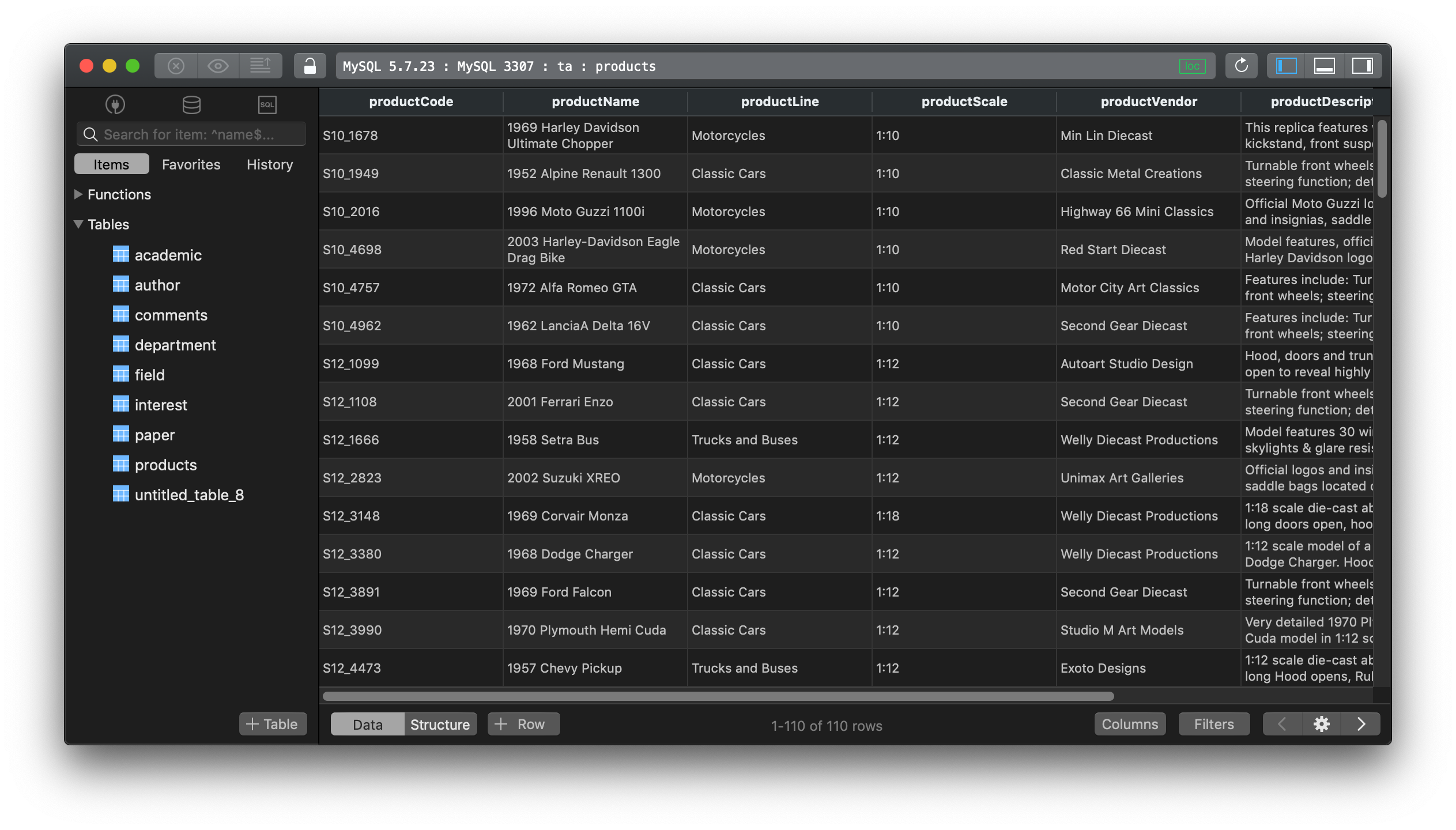HeidiSQL vs Navicat vs TablePlus - A quick review
In this post, we are going to have a quick review of HeidiSQL, Navicat, TablePlus; and compare the pros and cons to see which is the best GUI client for your database management tasks.
1. HeidiSQL
HeidiSQL provides a powerful graphical interface for managing tables, logs, and users of a MySQL database, as well as Microsoft SQL Server and PostgreSQL.
-
Supported Platforms: HeidiSQL was built for the Windows platform, and it only works on Windows.
-
Supported Drivers: Initially, HeidiSQL offered support for MySQL, then extended to MS SQL Server, and now it also includes PostgreSQL support.
-
Pricing: HeidiSQL is a free and open-source client. Its codebase was originally taken from Ansgar Becker’s own MySQL-Front 2.5 software. Anyone can download and use the app for free with no limitation, but it also accepts the donation.

Pros:
- It’s lightweight.
- Connect to multiple servers in one window
- Free to use – Licensed under GNU GPL.
- Portable. Alongside the possibility of downloading the installer and source code, a portable version of the software is available.
- Full database user management and privileges management options.
- Write queries with customizable syntax-highlighting and code-completion
- Data synchronization. HeidiSQL can compare and synchronize your data and structure between local and remote databases.
- SSH tunneling support
Cons:
- Low stability. HeidiSQL is known to have a lot of bugs that result in frequent crashes
- It’s only available for Windows and it doesn’t look like a cross-platform is coming anytime soon
- No built-in debugger included
- Low DPI display. The author attempted to add the high DPI but dropped it eventually.
2. Navicat
Navicat offers a powerful tool for both database development and administration.
-
Supported Platforms: Navicat is cross-platform. It’s available on Mac, Windows, Linux. Navicat also has its iOS versions.
-
Supported Drivers: Navicat supports several popular databases: MySQL, MariaDB, MongoDB, Oracle, SQLite, PostgreSQL, and Microsoft SQL Server.
-
Pricing: Navicat is a commercial application with 14 days trial and it has many pricing schemes. You can either buy a special edition for MySQL with:
- $119 for Non-Commercial Edition
- $199 for Standard Edition
- $299 for Enterprise Edition
- or you can buy Navicat Premium to work with all supported drivers at the price of $1299 for Enterprise Edition and $599 for Non-Commercial Edition.

Pros:
- It’s cross-platform and supports multiple drivers.
- Data and structure synchronization
- Visual query builder and report builder
- Good import/export options.
- Supports many languages, including Polish, Russian, Japanese, Portuguese, Korean, Simplified Chinese, Traditional Chinese, Spanish, French, and English
- Compatible with other Navicat products: Navicat Monitor, Navicat Data Modeler, Navicat Report Viewer, and Navicat Data Model Essentials.
Cons:
- It’s expensive. A single machine license for one driver only (MySQL for example) is already $299. If you work with more than one drivers, such as PostgreSQL, SQL Server, or SQLite, you will end up having to purchase the Navicat premium package at $1,299.
- It’s one of the most resource-intensive database tools. It leaves a high memory footprint while running.
- Very few shortcut keys.
3. TablePlus
With a native build and a lightweight size, TablePlus is a very handy tool for managing multiple databases.
-
Supported platforms: TablePlus is built native for each platform. It started out with a native version for Mac, then another version for Windows, and a version for Linux was introduced recently as an alpha release. It also has an iOS version.
-
Supported Drivers: TablePlus supports a handful of relational databases: MySQL, PostgreSQL, SQLite, Microsoft SQL Server, Amazon Redshift, MariaDB, CockroachDB, Vertica, Oracle; and two popular NoSQL databases: Cassandra and Redis.
-
Pricing: TablePlus has a free version with full set of features which you can download and use forever, but there are some usage limitations. If you use it heavily, the license costs $59 to remove all those limitations.

Pros:
- Native build for each platform so it’s fast, lightweight, and stable.
- Clean and simple interface.
- Multiple drivers support
- Multiple conditions data filter
- Queries history and keyword binding favorite.
- Streaming results and async loading to show queries results faster and doesn’t block the UI.
- Very quick inline editing for table data and structure, you also can edit query results directly.
- Smart query editor with highlight syntax, instant autocomplete, SQL reformat.
- A plugin system to extend the app.
- Quick support. TablePlus releases new updates regularly and responds to users’ requests almost immediately.
Cons:
It currently lacks of some advanced features such as ER Diagram, database compare tool to Diff and Sync, etc.
4. Conclusion
Go with HeidiSQL if you:
- Prefer the old-fashioned design with loads of buttons in the UI.
- Work on Windows only
- Need a tool that is feature rich.
Go with SQLyog if you:
- Need a full-featured tool
- Don’t mind the slugginess
- Are comfortable with the cost
Go with TablePlus if you:
- Are a fan of native experience
- Work with multiple databases
- Want a modern design with better usability
- Want quick support & development cycle.